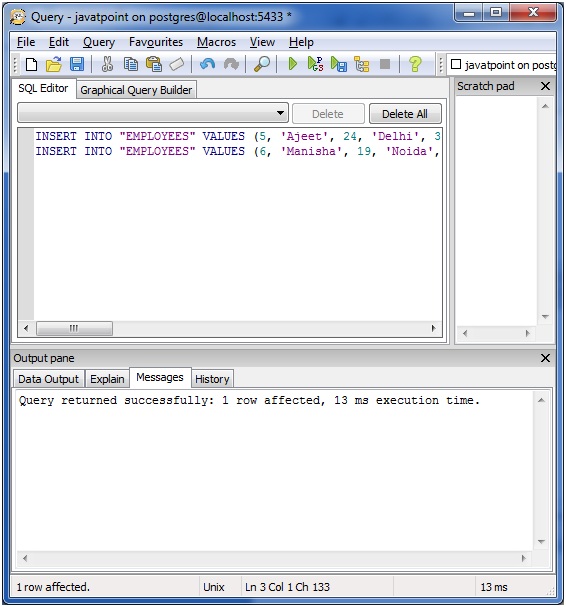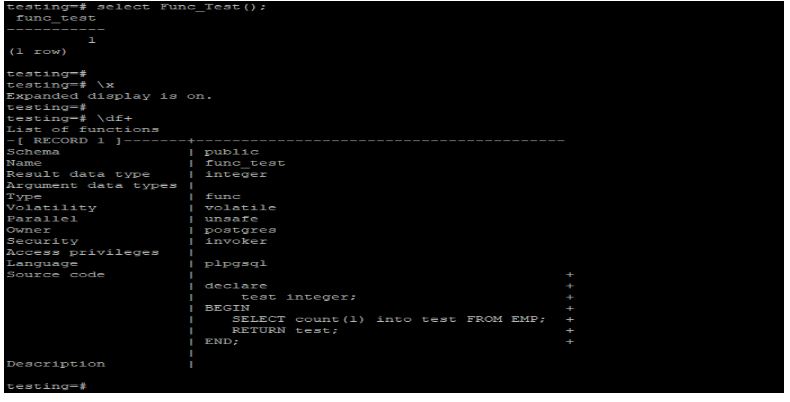

You then process flagged comments in batches. A smaller index takes less storage, is easier to maintain, and is faster to scan.įor example, suppose you allow users to flag comments on your site, which in turn sets the flagged boolean to true. The idea is to increase the efficiency of the index by reducing its size. Partial IndexesĪ partial index covers just a subset of a table’s data. When this happens, a sequential scan is most likely much faster than an index scan, so the query planner has in fact correctly judged that the cost of performing the query that way is lower. So, for example, it’s correct for the query planner to use an index for the query select * from foo where bar = 1, and yet not use one for the query select * from foo where bar = 2 if there happened to be far more rows with “bar” values of 2. The number of rows retrieved from the table can vary based on the particular constant values the query retrieves. It’s okay if the same query uses an index scan on some occasions but not others. Most of the time, the planner chooses correctly, even if it isn’t obvious why. There are many reasons why the Postgres planner can choose to not use an index. For examples of GIN and GiST index usage, refer to the contrib packages.
#HAVING POSTGRESQL EXAMPLE HOW TO#
This article is about how to get the most out of default B-Tree indexes.

They’re used to index the geometric data types, as well as full-text search. Generalized Search Tree (GiST) indexes allow you to build general balanced tree structures, and can be used for operations beyond equality and range comparisons.GINs are good for indexing array values as well as for implementing full-text search. Whereas B-tree indexes are optimized for when a row has a single key value. Generalized Inverted Indexes (GIN) are useful when an index must map many values to one row.In Postgres 10 and above, hash indexes are now write-ahead logged and replicated to followers. So, the advantage over using a B-tree is rather small. Hash Indexes pre-Postgres 10 are only useful for equality comparisons, but you never want to use them since they aren’t transaction safe, must be manually rebuilt after crashes, and aren’t replicated to followers.B-trees are designed to work very well with caching, even when only partially cached. They can operate against all datatypes, and can also be used to retrieve NULL values. B-tree indexes can be used for equality and range queries efficiently. Therefore the number of levels that must be traversed to find rows is always in the same ballpark. B-trees attempt to remain balanced, with the amount of data in each branch of the tree being roughly the same. Virtually all databases have some B-tree indexes. B-Tree is the default that you get when you do CREATE INDEX.Postgres supports many different index types: B-tree indexes are also useful for avoiding sorting. It’s only useful if the number of rows to be retrieved from a table is relatively small (that is, the condition for retrieving rows - the WHERE clause - is selective). In this article, we give an overview of the types of indexes available, and explain different ways of using and maintaining the most common index type: B-trees.Īn index is a way to efficiently retrieve a relatively small number of rows from a table. So, here we will take the employee table, which we created in the earlier topics of PostgreSQL tutorial.There are many types of indexes in Postgres, as well as different ways to use them. Let us see some examples of having clause in PostgreSQL. The WHERE clause is applied to rows only. The HAVING clause is useful to groups of rows. The WHERE clause permits us to filter rows according to a defined condition. The HAVING clause allows us to filter groups of rows as per the defined condition. Let us see the difference between HAVING Clause and WHERE Clause: Having clause Difference between having and where clauses We cannot use the column aliases in the HAVING clause because, when assessing the HAVING clause, the column aliases defined in the SELECT clause are not accessible. In PostgreSQL, the HAVING clause works in below format: Subsequently, the HAVING clause is working before the SELECT clause. Note: In PostgreSQL, we can add other clauses of the SELECT command such as LIMIT, JOIN, and FETCH. It is used to define a condition which filter the sets. It is used to return rows grouped by column1. In the above syntax, we used the following parameters: Parameters


SELECT column1, aggregate_function (column2)


 0 kommentar(er)
0 kommentar(er)
